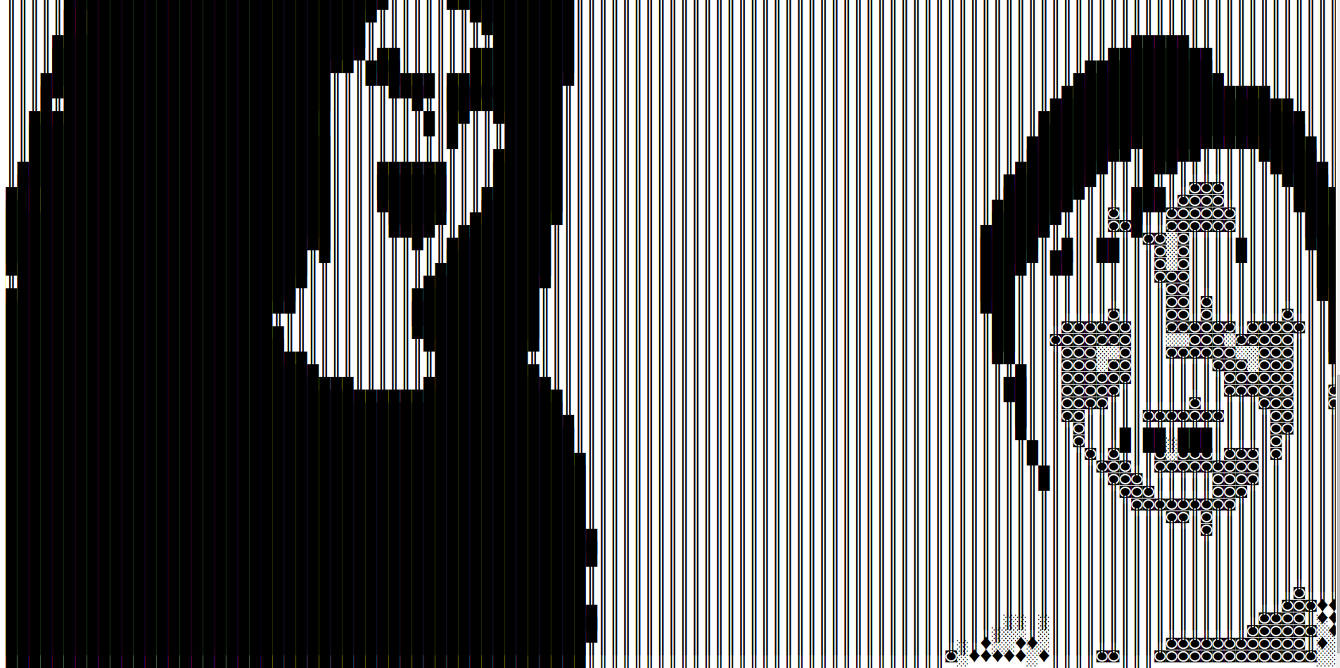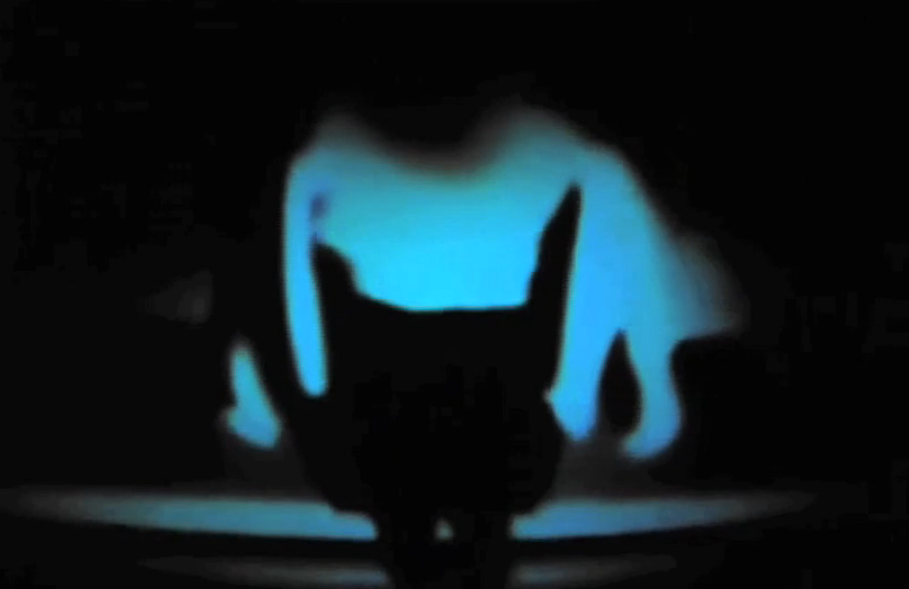Electromagnetic Landscape
Electromagnetic Landscape. Presented at International Symposium on Electronic Art in 2015. Made in collaboration with Ayaka Okutsu and Daniel Cermak.

{forceGlitch.spaceError ++; I}
Together with long time collaborator and friend, Marie Friis Forchhammer, and her partner, Daniel Andersen, Stina is working with precarious aesthetics both in a series of photographies and in an interactive installation shown at DIAS - Digital Interactive Art Space and MIX Copenhagen 2014. see/hear more here

Meating Ghosts
Sound design for Meating Ghost, by visual artist Ayaka Okutsu.
The work is a video installation with binaurally recorded sound, which gives a 360degree perception through hearing. It creates an uncanny sense of dimension and physicality, offering artificial impairment in hearing and seeing. Presented at Atelier Hotel Pro Forma April 2014.

BRØL
BRØL, a sound art project at University of Copenhagen, Culture Night 2010.

This piece investigates the sound designing process creating different sonic expressions of a scream the with editing tools.
Scream / Brøl was presented as an audio-visual installation at University of Copenhagen, 2010
The Language Tree
The Language Tree is a surround sound installation displaying a conversation between different languages on what wisdom is. The voices whisper, scream, argue and discuss the matter in ways that transform the meaning of the words into a cacophonous sonic display of the voices and the recording technology used in the piece.
The Language Tree was comissioned by Enge-rom Library University of Copenhagen 2010
The Language Tree is a surround sound installation made for the Engerom Library at University of Copenhagen. The excerpt shows the first part of the 30 min installation.
The Language Laboratory
The Language Laboratory plays with the duality between content and expression in connection to the meaning of language. Here an investigation of the character of the words when they no longer have a meaning is at play, as well as the differences and similarities between the languages.
Presented at University of Copenhagen in 2011
Ceci n'est pas une voix qui parle
In this piece auditory illusion,Trompe L'oreille is in focus. The words "Ceci n'est pas une voix qui parle " are referencing the painting Ceci n'est pas une pipe by René Magritte, 1928/1929.
Google Translate Speech Technology, French, 2011
Hear Your Telly
Hear Your Telly, 2008. Exhibited at BYOB, Nikolaj Copenhagen Contemporary Art Center, 2011. The video piece focuses on how we perceive the sound design when the visual imagery we expected to guide us through a story has disappeared.
Feedback
Feedback, 2008, video loop. Royal Holloway, University of London


FEEDBACK from stina hasse on Vimeo.
Jeg Står i et Rum
Jeg Står i et Rum was recorded in 2008 in a resonant chamber at the Danish Technical University, Department of Acoustics, Denmark.Through a reappropriation of I am Sitting in a Room from 1970 by Alvin Lucier in an anechoic chamber and a reverberant space where the reverberation is controlled by plates hanging from the ceiling, new meanings of the work appears.
The reappropriation in the resonant chamber investigates the interaction between voice, recording technology and space and specifically how the character of the voice merges with the character of the space.
ekstra
The Robot at the Museum
The Robot at the Museum (2015 - 2016) investigated the listening relations we have to social robots in a museum context. What kind of engagements does the robot create?
Specifically the project experimented with the humanoid robot NAO as a museum tour guide at Medical Museion in Copehagen, Denmark.
 The project was made in collaboration with Oliver Alexander Tafdrup, PhD Fellow at Future Technology, Culture & Learning, Aarhus University and Stine Harrekilde, MA at Future Technology, Culture & Learning, Aarhus University. The project was realized in collaboration with Medical Museion, University of Copenhagen. Read, listen and see more about the project here.
The project was made in collaboration with Oliver Alexander Tafdrup, PhD Fellow at Future Technology, Culture & Learning, Aarhus University and Stine Harrekilde, MA at Future Technology, Culture & Learning, Aarhus University. The project was realized in collaboration with Medical Museion, University of Copenhagen. Read, listen and see more about the project here. LOVELACE projects (2014 - 2015)
Ada Lovelace formed what is now recognized as the world's first computer program in 1843 and pioneered science. As a tribute to her work curators Majken Overgaard and Stina Hasse organize a series of workshops and exhibitions in different exhibition spaces, which focuses on the interface between the body and technology from a feminist perspective. The workshops and exhibitions was supported by the Danish Arts Council.
In Rhythms of Site we invited musician and sound artist, SØS Gunver Ryberg, to lead a workshop at DIAS on how to compose site-specific music or sound installations. Participants worked with sound processing programs and composition techniques in relation the investigation of the movement, rhythm and harmony of sites. In Poetical Science we explored interfaces between the human body and technology. The workshop and exhibition was specifically focused on the keyboard as an interface. The keyboard is our entry point to the computer; this is where our ideas and thoughts get transformed flow from our bodies sand get transformed into binary input and reactions on the screen. It is also the starting point for most human–computer interaction. The workshop led by artist Raquel Meyers working with Commodore 64, teletext , laptops, typewriters to create graphics and animations. The purpose of the workshop is to find new ways of expression in these unique media environments. Participating artist: Raquel Meyers, Rosemary Lee, Emilie Oksholt, Marie Friis Forchhammer, Thea Sikker Remin and Ioana Grozav. The exhibition was hosted by the c4 project space.
Please Try This at Home (2014)
The exhibition explored the interdisciplinary universe where art, science and technology cross-fertilize and form creative environments for developments of new ideas, experiments and inventions. Knowledge should be accessible to everyone and therefore the exhibition's focus was on hacks, artworks, and artifacts that open for the audiences to re-enact, copy and develop further. Here the audience was not passive spectators or consumers, but active contributors and co-creators in the development of new citizen science. The exhibition showed works from around the world and from various communities, artists, researchers etc. For instance one could experience how open hardware such as the prototyping platform Arduino or the 3D printer RepRap has affected our creative processes and the way we invent, produce and design new objects. Understanding human-machine interaction in the digital age is of critical importance therefore our aim with the exhibition was to create a new setting for knowledge sharing, dialogue and development within the public sphere, between citizens, universities, industries and at home.
Please Try This at Home, Kopenlab, Copenhagen. Curated by Majken Overgaard, Jens Jørgensen and Stina Hasse. Participating artist: Laura Beloff and Martin Malthe Borch, Erich Berger, Raquel Meyers, LoVid, Jacob Sikker Remin and Jakob Bak, Ioana Grozav and Annesofie Sandal, Hackateria, Denisa Kera and Yair Reshef and Silvia Lindtner (collectors), Paul Nicholas (CITA) with Jacob Riiber (CITA) and Antonio Scaffidi (Institute for Product Design, School of Design) in collaboration with KADK students Shirin Zaghi and Lena Kriwanek.
Move/Bevæg Dig
Move/Bevæg Dig (2011 - 2012) focuses on the listener’s interaction and experience of words as musical expressions, in relation to the body and the surrounding space. The hardware consists of a pair of headphones, an Arduino nano and two ultrasonic distance sensors. The software is formed by a phase vocoder Max MSP patch originally created by Dan Trueman transforming the data send from the Arduino. The interactive sound installation is part of a research project that investigates the potential of interactive sound installations.
 Move/Bevæg Dig is made in collaboration with Jeff Snyder. The project has been presented at BEAM Festival & LAK Festival. Listen, watch and read more about the research project here.
Move/Bevæg Dig is made in collaboration with Jeff Snyder. The project has been presented at BEAM Festival & LAK Festival. Listen, watch and read more about the research project here.I am Sitting in a Different Room
I am Sitting in a Different Room (2010) was recorded in 2008 an anechoic chamber at the Danish Technical University, Department of Acoustics, Denmark.
Through a reappropriation of I am Sitting in a Room from 1970 by Alvin Lucier in an anechoic chamber new meanings of the work appears. The reappropriation in the anechoic chamber investigates the process of playback and recording in the anechoic chamber and how this transforms the character of the voice, not as space, but as technology. This makes the recording device, normally almost inaudible, audible. Read more about I am Sitting in a Different Room in the article 'Doing It Wrong' by Douglas Repetto published in Frontiers of Engineering. Read more about the whole project in the article 'I am Sitting in a Room - from a listener's perspective' in Body, Space & Technology Journal.